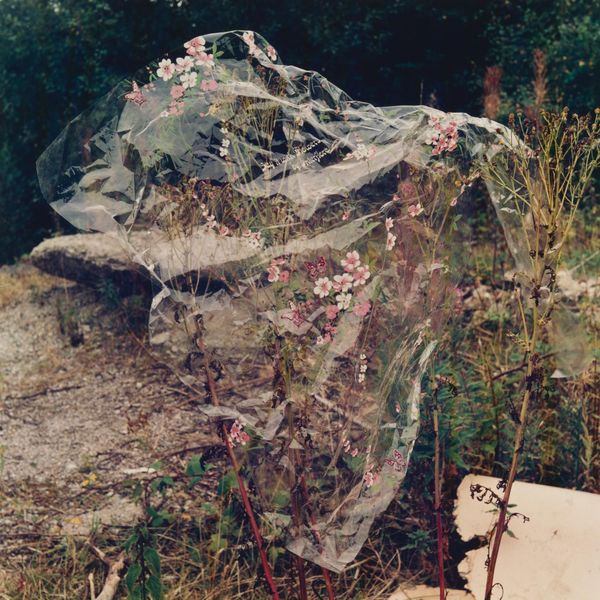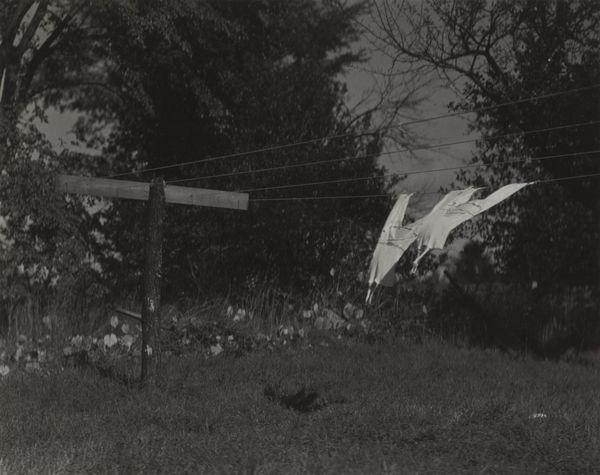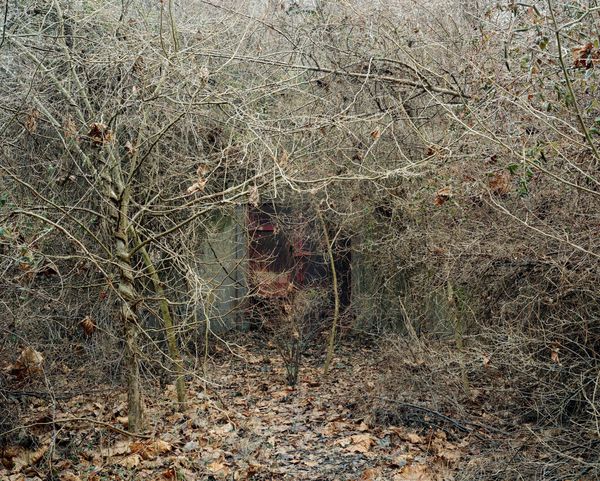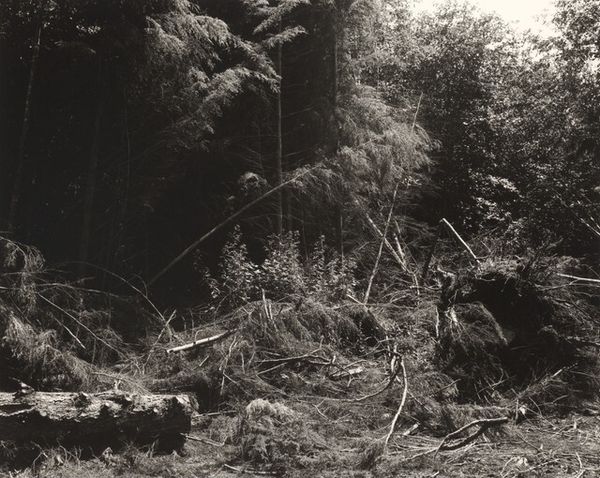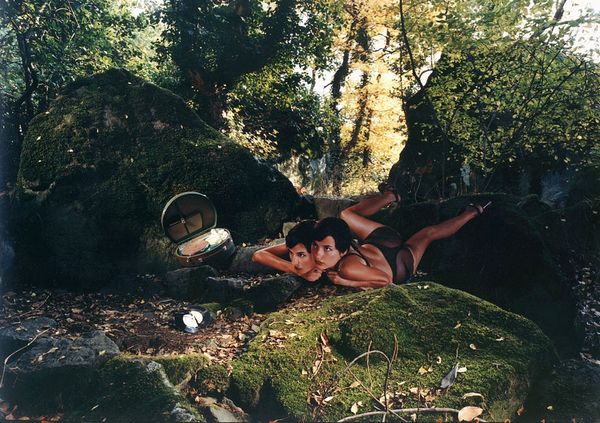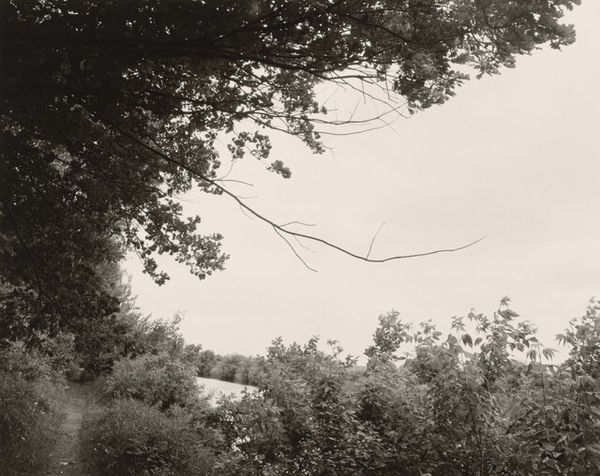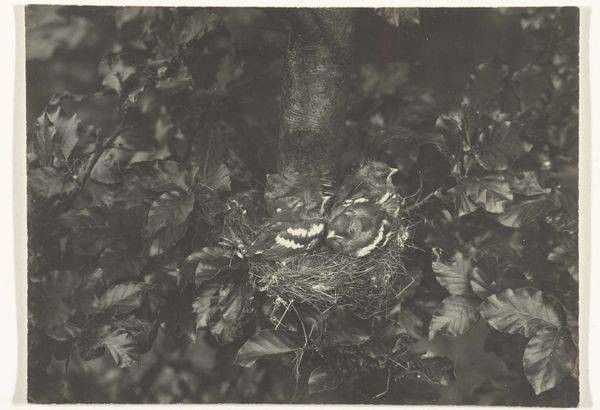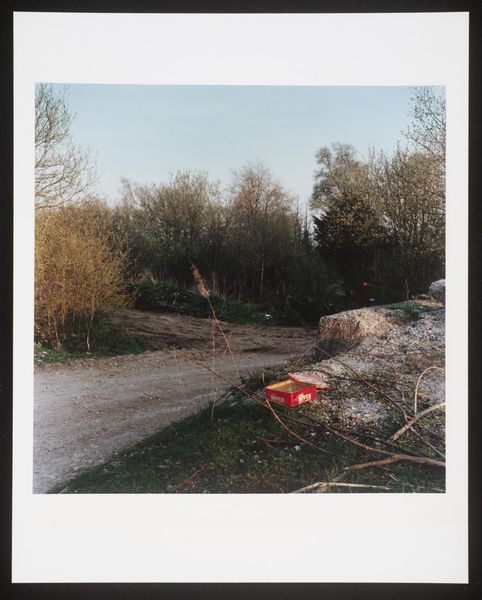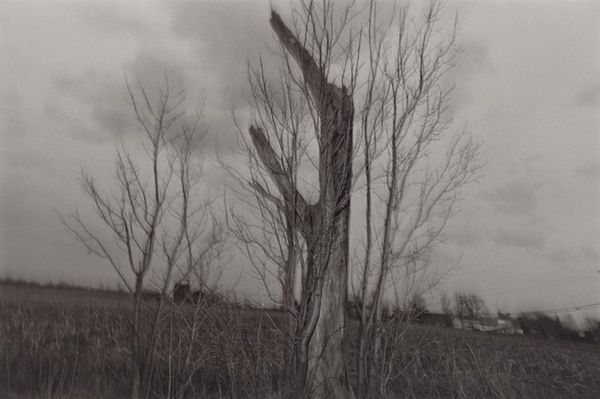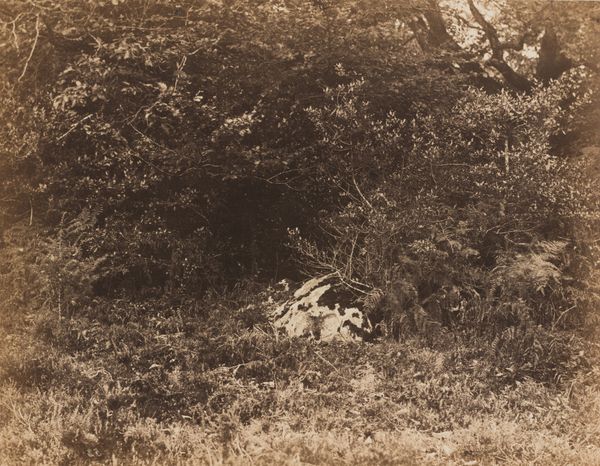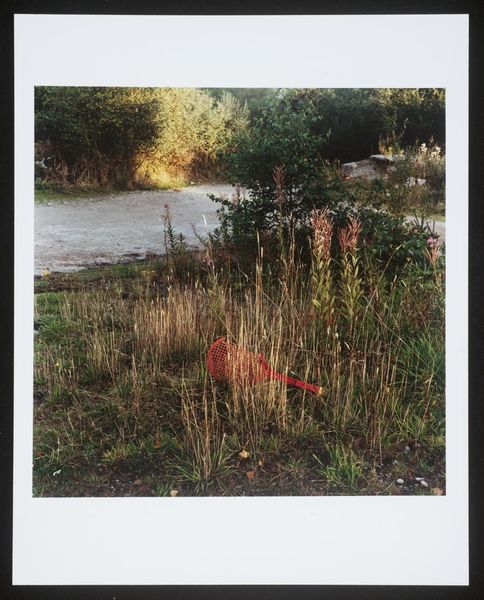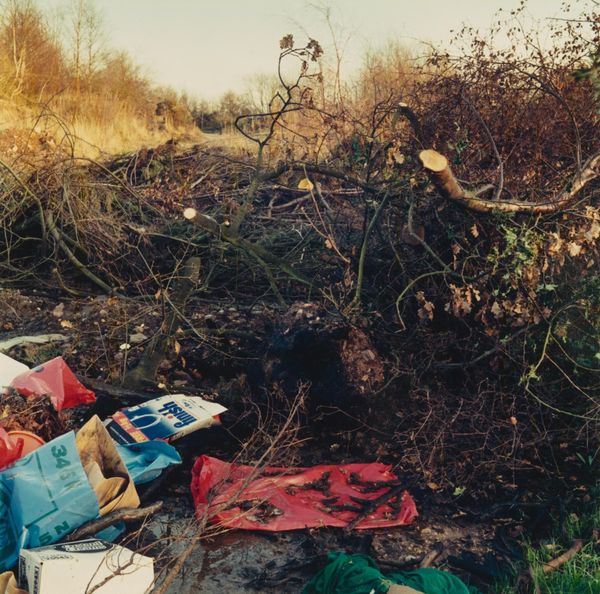
Dimensions: support: 254 x 202 mm
Copyright: © The estate of Keith Arnatt | CC-BY-NC-ND 4.0 DEED, Photo: Tate
Curator: Keith Arnatt's small-scale photograph captures what appears to be a discarded plastic bag suspended in a thicket, its surface adorned with a colorful bird motif. Editor: Initially, the image evokes a sense of melancholy, a stark juxtaposition of manufactured waste against the backdrop of lush, natural overgrowth. Curator: Arnatt's practice often highlighted the everyday. The use of a commonplace object like a plastic bag, combined with a printed image, invites reflection on consumer culture. Editor: The bag’s placement in nature—seemingly abandoned yet deliberately displayed—raises questions about the role of photography in framing our understanding of the environment. Do you think there is a political message here? Curator: Absolutely, the artist's choice to document this scene emphasizes the disposability inherent in consumerism and the environmental impact of human actions. Editor: Seeing the artwork in that way offers a profound understanding of how humans alter the landscape. Curator: Indeed, Arnatt's work serves as a critical reflection on our relationship with the material world.
Comments
tatebritain 6 months ago
⋮
http://www.tate.org.uk/art/artworks/arnatt-miss-graces-lane-t13160
Join the conversation
Join millions of artists and users on Artera today and experience the ultimate creative platform.
tatebritain 6 months ago
⋮
In Miss Grace’s Lane, Keith Arnatt presents natural beauty and environmental degradation side by side. ‘I am very fond of paradox’, the artist notes. Using his camera to achieve a large depth of field, Arnatt gives equal importance to all elements, setting out to create ‘pictures which are not chaotic out of chaos’. One image shows rubbish strewn across the English landscape, bathed in soft, golden hour light. The series references Romanticism, the nineteenth-century art movement inspired by human psychology, personal expression and the natural world. Arnatt parodies the sublime landscapes of British painters like Samuel Palmer (1805–1881), combining the picturesque and the polluted. Gallery label, November 2024
